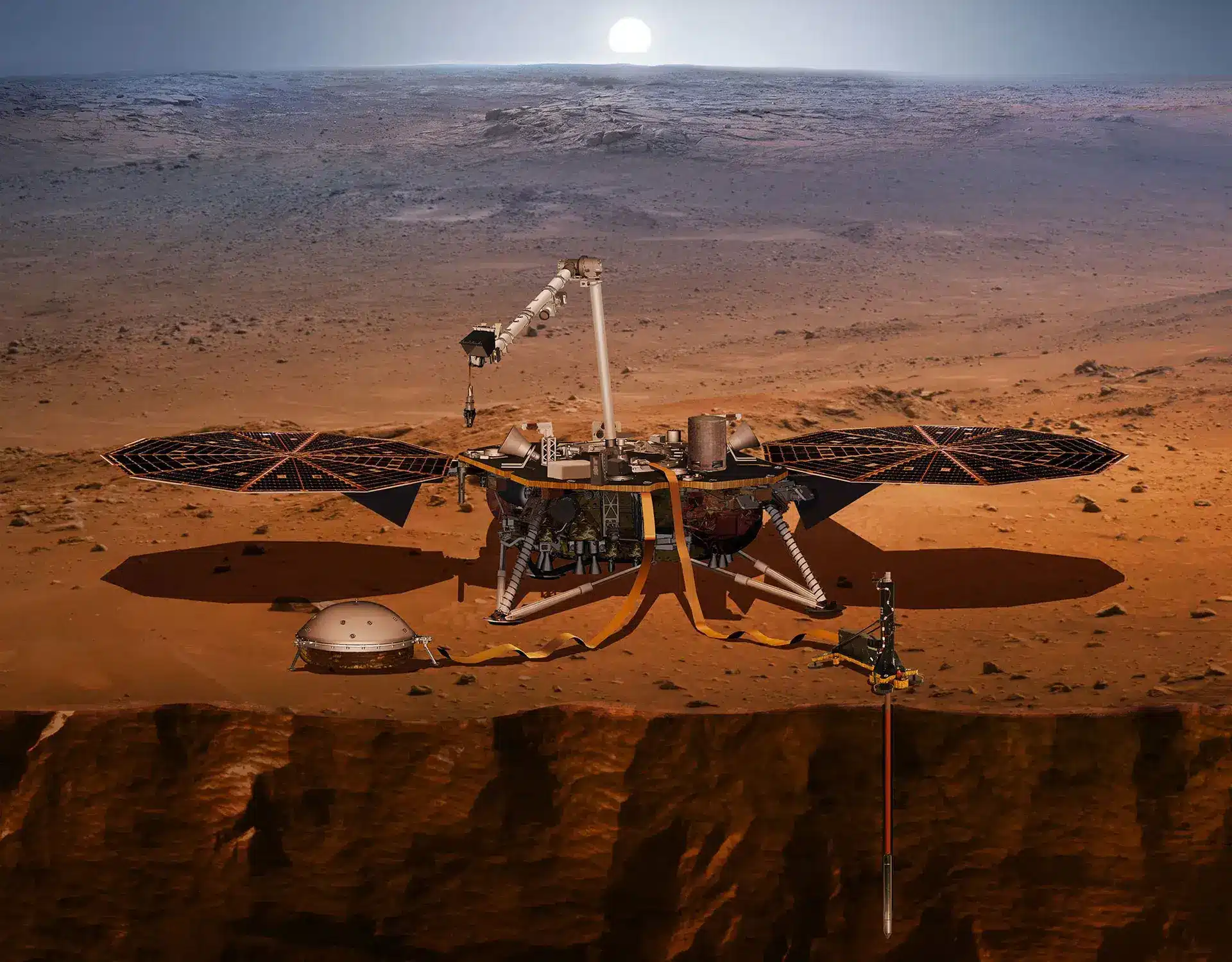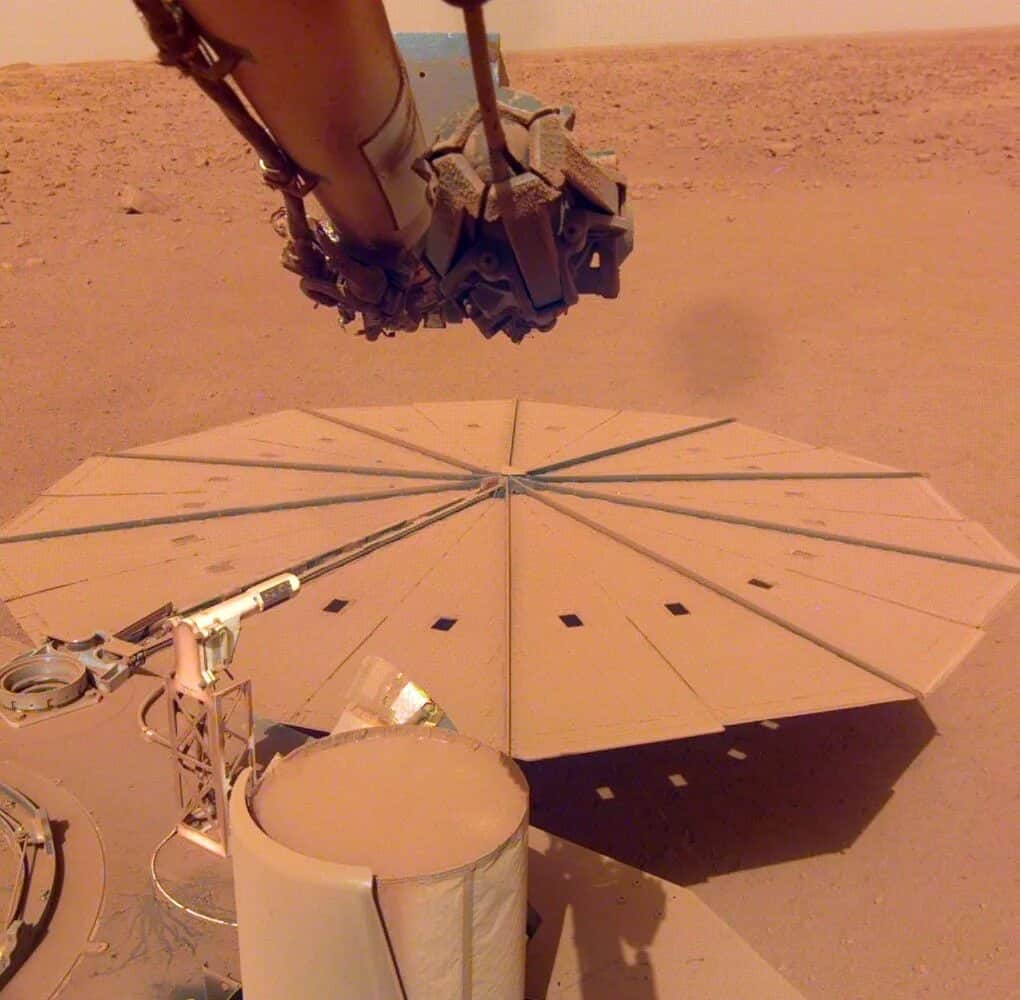Dusty solar panels and darker skies are expected to bring the Mars lander mission to an end around the end of this year

NASA's Mars InSight lander is gradually losing energy and will likely end science operations later this summer. The InSight team expects the lander to become inactive by December, ending a mission that has so far detected more than 1,300 Earthquakes — the most recent being a magnitude 5 that occurred on May 4, 2022 — and pinpointing quake-prone regions on the Red Planet.
The information gathered from these tremors allowed scientists to measure the depth and composition of Mars' crust, mantle and core. Additionally, InSight recorded vital weather data and studied the remnants of Mars' ancient magnetic field.
The crew of NASA's Mars InSight lander talks about the science of the mission and the innovative ways they tackled engineering challenges. While on Mars, InSight achieved all of its major science objectives and continues to detect vibrations.
Credit: NASA/JPL-Caltech
"INSIGHT has transformed our understanding of the interior of rocky planets and is setting the stage for further missions," said Laurie Glaze, director of NASA's Planetary Sciences Division. "We can apply what we learned about the internal structure of Mars to Earth, the Moon, Venus and even planets in other solar systems."
InSight landed on Mars on November 26, 2018. It is equipped with a pair of solar panels, each 2.20 meters wide, and was designed to achieve its main science goals in the first Martian year (close to two Earth years). Having caught up with them, the spacecraft is now on mission extension, and the solar panels are producing less electricity as they continue to collect dust.

Because of the power shortage, the team will place the lander's robotic arm in its resting state for the last time later this month. Originally designed to house the lander's seismograph and heat probe, the arm played an unexpected role in the mission: Along with using it to bury the heat probe in the troubled Martian soil, the crew used the arm to remove dust from the solar panels. This allowed the seismograph to operate more frequently and led to new discoveries.
When InSight landed, the solar panels were producing around 5,000 watt-hours each day from Adami - enough to run a baking oven for an hour and forty minutes. Now they produce about 500 watt-hours - enough to run the oven for only ten minutes.
This illustration shows a simulation of InSight about to land on the surface of Mars. This is a view of the top of the spacecraft.
Credit: NASA/JPL-Caltech
In addition, seasonal changes begin in the area where Insight is located. In the coming months there will be more dust in the air, and this will reduce the sunlight and the energy of the spacecraft. In the past they managed to remove some of the dust, but a stronger dust clearing event, such as a "dust demon" (a passing air vortex) is needed to reverse the current trend.
More of the topic in Hayadan:

4 תגובות
It's not clear to me, they didn't know that dust is a problem on Mars... Let's say that there is nothing to be done against a massive sandstorm, but against a growing accumulation of dust... If there are 5 megawatts an hour, what is the problem with equipping the arm with an air injector or something like that...
The trackers knew the answer a long time ago: "operator and honest". A small wiper on the panels like in a car window would have saved throwing away a lander costing millions.
It seems to me that this is a similar problem with all solar panels, even the ones on Earth.
So a patent for Mars = a patent for Earth
It can be assumed that future models of such vehicles will be designed to clean themselves at least partially. Instead of waiting for a red storm, maybe some fans and tilting the solar panels to a vertical position can solve the problem.